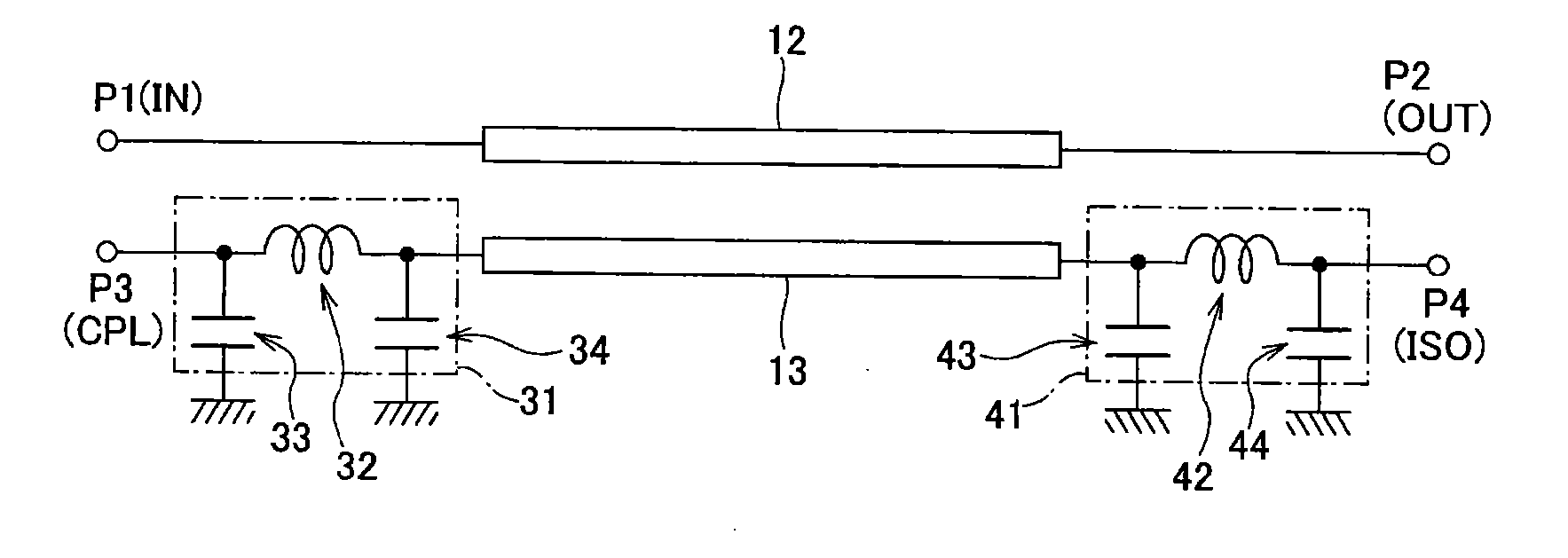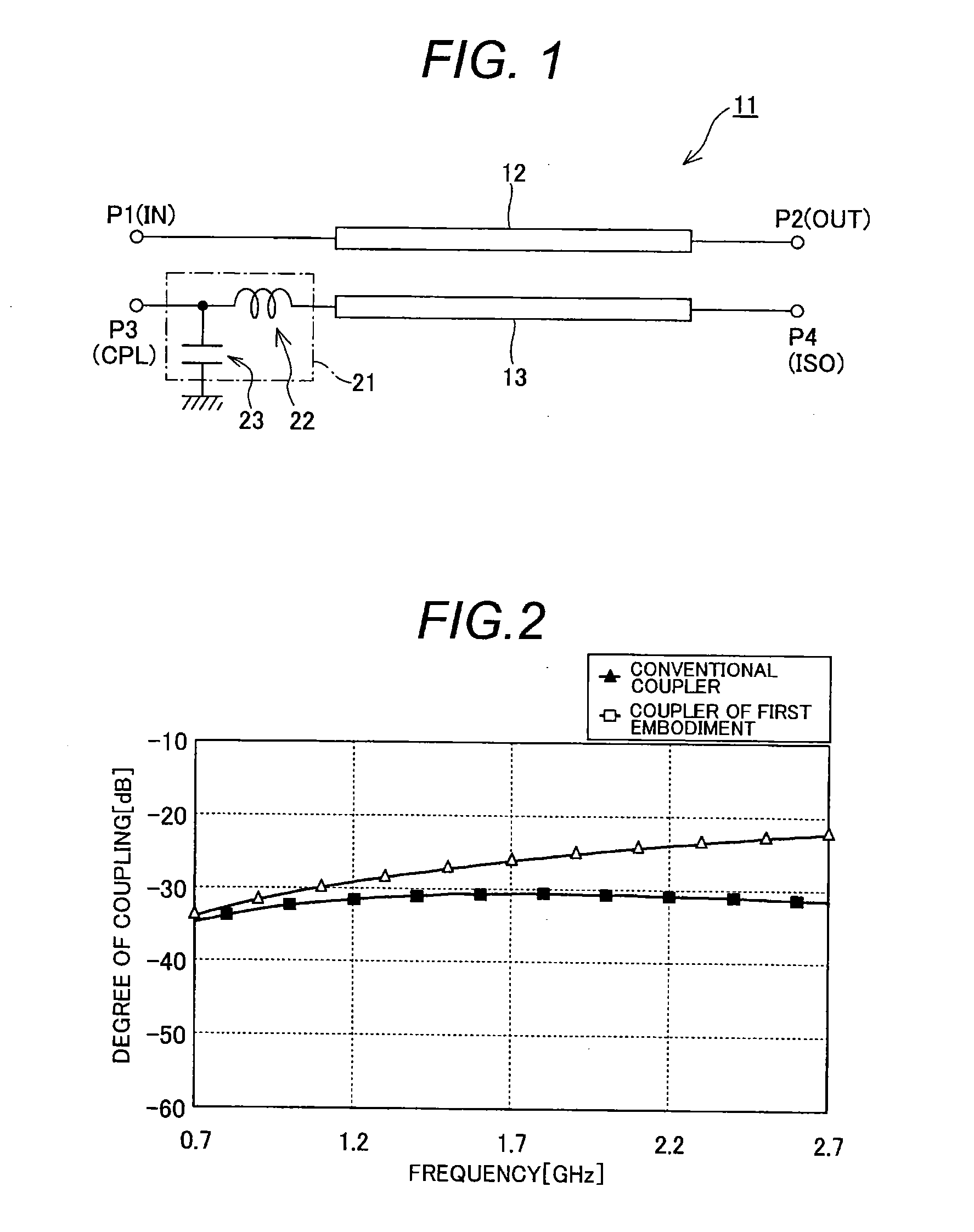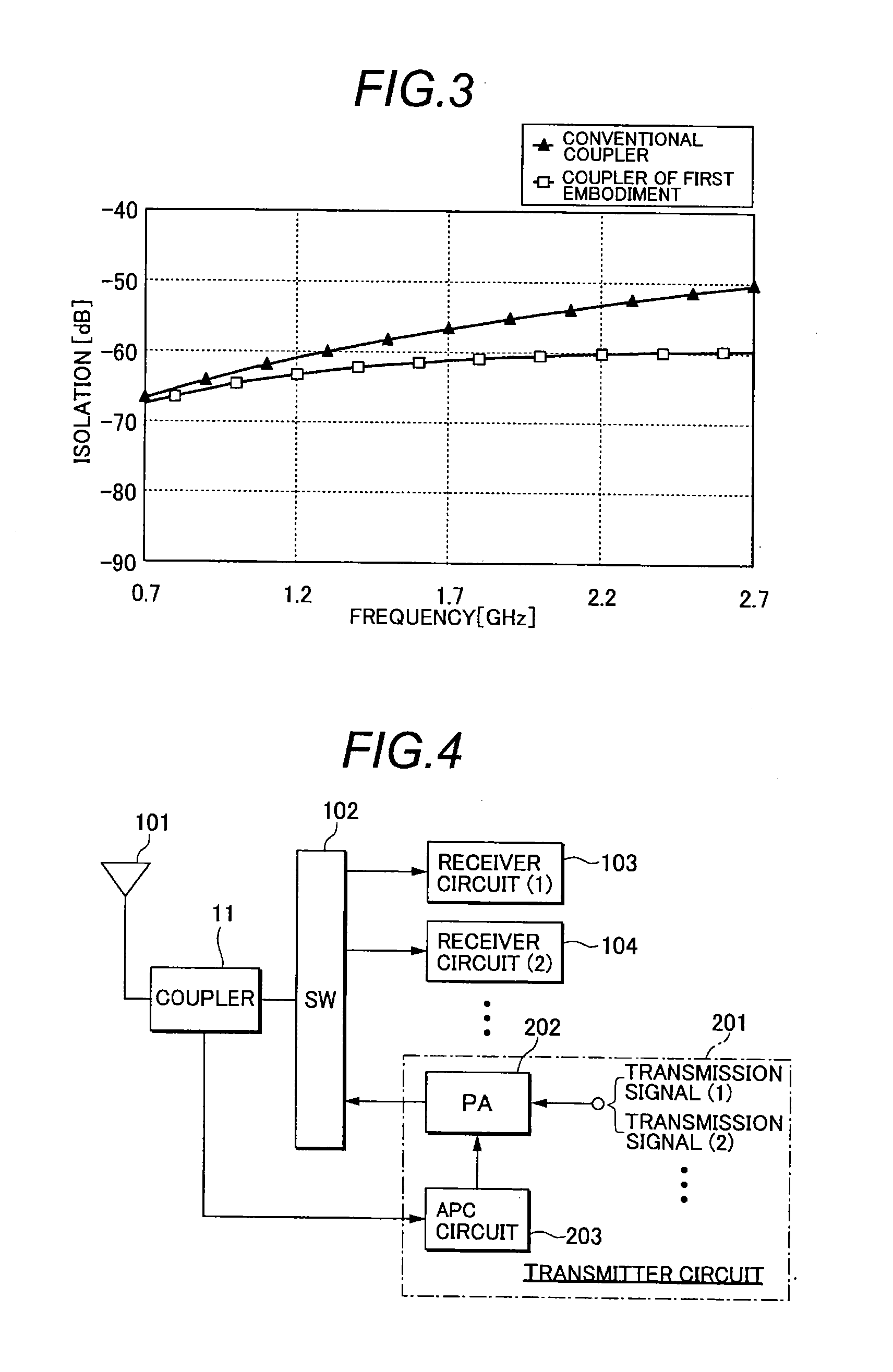Directional coupler and wireless communication device
- Summary
- Abstract
- Description
- Claims
- Application Information
AI Technical Summary
Benefits of technology
Problems solved by technology
Method used
Image
Examples
second embodiment
[0078]As shown in FIG. 5, a coupler according to a second embodiment of the present invention comprises an LPF unit (first LPF unit) 31 between a secondary line 13 and a coupling port P3, as is the case with the first embodiment, and additionally comprises an LPF unit (second LPF unit) 41 between the secondary line 14 and isolation port P4.
[0079]Notably, in this embodiment, each of the LPF units 31, 41 is a so-called n-type low pass filter which comprises two capacitors 33, 34; 43, 44 connected in parallel at both ends of the inductor 32, 42 which are connected in series. The first LPF unit 31 is made up of the inductor 32 inserted in series between the secondary line 13 and coupling port P3, and the capacitors 33, 34 connected at both ends of the inductor 32, respectively, between the transmission line and the ground which are located between the secondary line 13 and coupling port P3. The second LPF unit 41, in turn, is made up of the inductor 42 inserted in series between the sec...
third embodiment
[0081]As shown in FIG. 6, a coupler according to a third embodiment of the present invention comprises LPF units 51, 61 on both sides of a secondary line 13 (between a coupling port P3 and the secondary line 13 and between an isolation port P4 and the secondary line 13), respectively, as is the case with the coupler according to the second embodiment, and further in addition to these, comprises a capacitor 65 connected between the coupling port P3 and the isolation port P4. Here, each of the LPF units 51, 61 is an L-type low pass filter made up of an inductor 52, 62 and a capacitor 53, 63, similar to those of the first embodiment.
[0082]FIGS. 7 and 8 show the result of a simulation performed to reveal the frequency characteristic for the degree of coupling (FIG. 7) and isolation (FIG. 8) of the coupler according to the third embodiment, respectively, in comparison with those of a conventional coupler (which does not comprise the LPF units 51, 61 nor the capacitor 65 between P3 and P4...
first embodiment
[Exemplary Modification to First Embodiment]
[0086]While the coupler 11 of the first embodiment can provide for a flat degree of coupling by adding the LPF unit 21, the LPF unit 21 connected in this way can sometimes cause a deterioration in isolation and directivity.
[0087]Specifically, the coupler establishes the directivity by a combination of an induced current and a displacement current on the secondary line. Therefore, a deterioration in isolation and directivity can often be caused by unwanted coupling between the coupling port and the output port, a phase shift of the induced current to the displacement current on the secondary line, and the like. In the first embodiment described above, on the other hand, the LPF unit 21 is connected to the secondary line 13. Presumably, the connection of the LPF unit 21 results in losing the balance of the phase difference between the induced current and displacement current on the secondary line 13, which can be a cause for giving rise to a...
PUM
 Login to View More
Login to View More Abstract
Description
Claims
Application Information
 Login to View More
Login to View More - R&D
- Intellectual Property
- Life Sciences
- Materials
- Tech Scout
- Unparalleled Data Quality
- Higher Quality Content
- 60% Fewer Hallucinations
Browse by: Latest US Patents, China's latest patents, Technical Efficacy Thesaurus, Application Domain, Technology Topic, Popular Technical Reports.
© 2025 PatSnap. All rights reserved.Legal|Privacy policy|Modern Slavery Act Transparency Statement|Sitemap|About US| Contact US: help@patsnap.com



